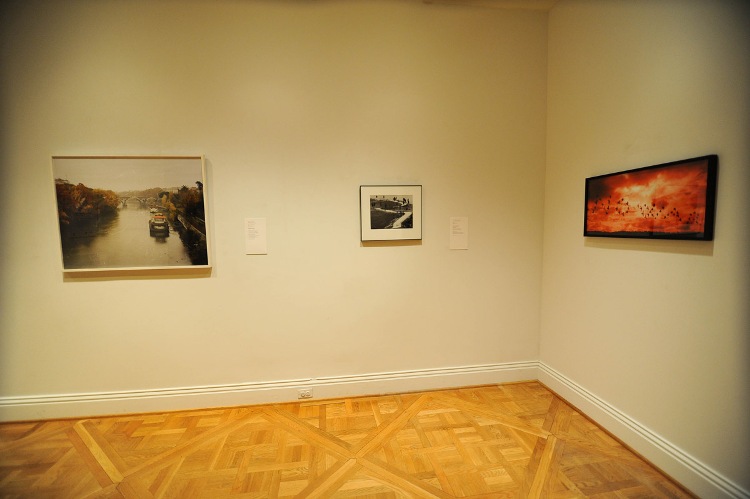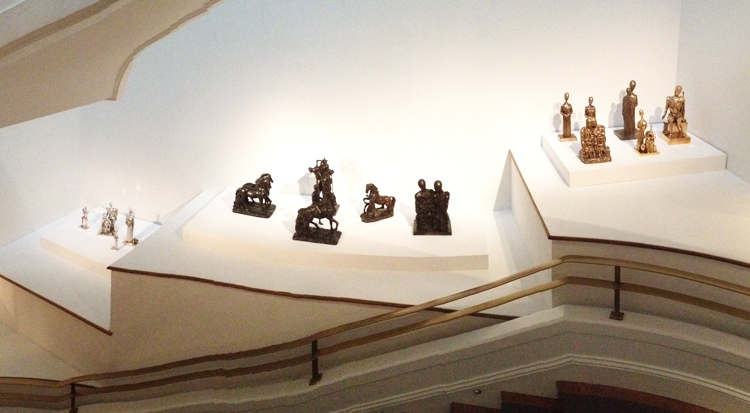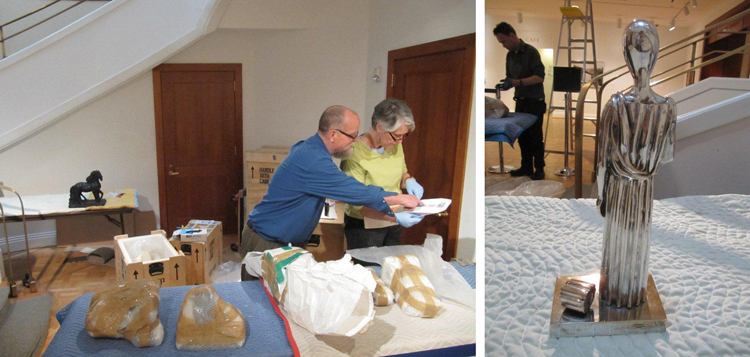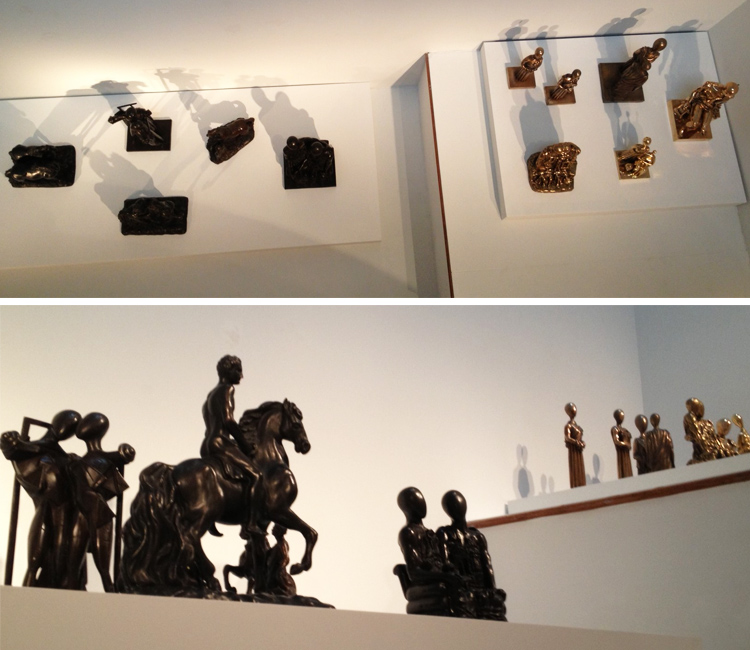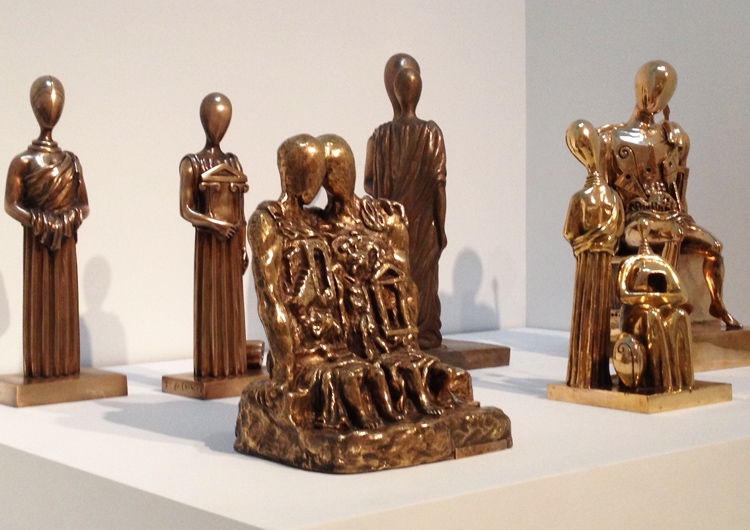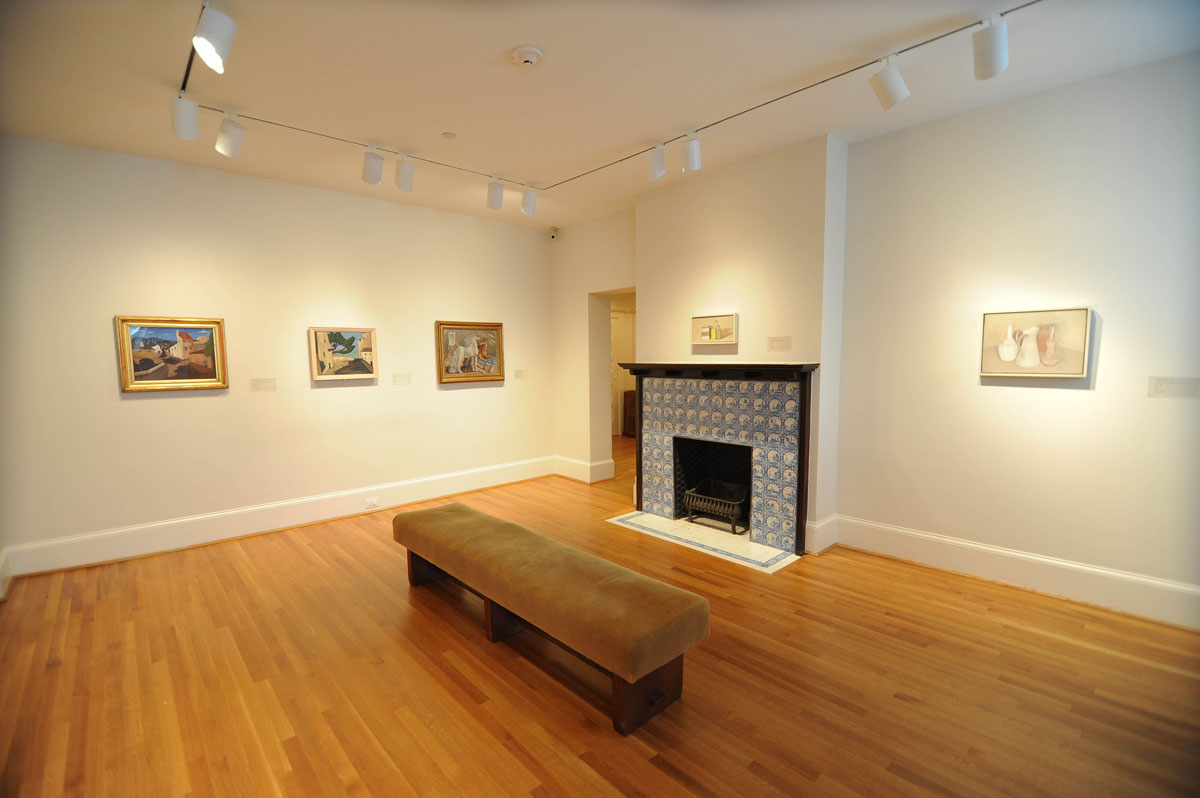
New installation of works inspired by Italy in an upstairs gallery in the house. Photo: Joshua Navarro.
From the ancient Romans to the Renaissance, Italy has attracted and inspired artists from around the world for centuries. Many considered their artistic training incomplete without a trip to study from the great masters and to record the beautiful surrounding landscapes of Italy. The styles of art created and employed were just as diverse as the nationalities of the artists that Italy inspired. In a new permanent collection installation in the house, artists both Italian and foreign from the late 19th to the mid-20th century use the common thread of Italian inspiration to interpret landscapes and still life themes that reflect their unique visual vocabulary. This week, I will explore the foreign artists attracted to the beauty of Italy that are represented in the gallery.
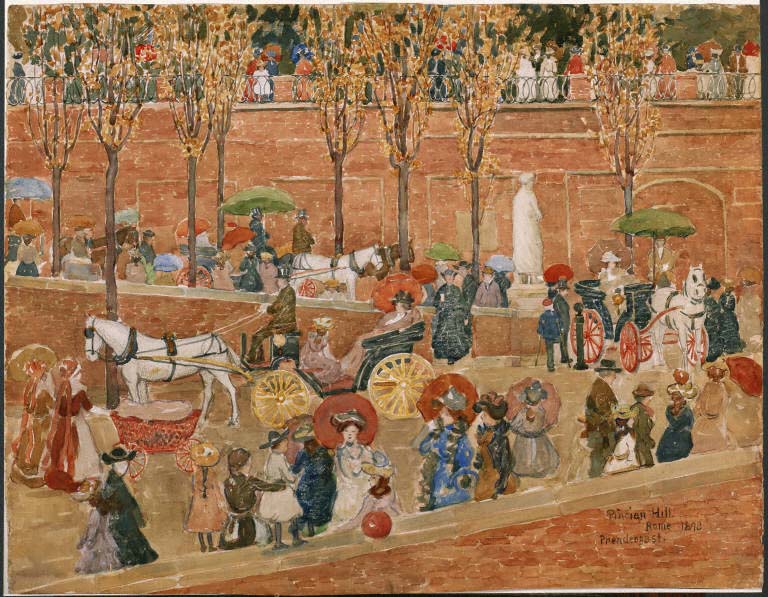
Maurice Prendergast, Pincian Hill, Rome, 1898. Watercolor over graphite pencil underdrawing on thick, medium-textured, off-white watercolor paper, 21 x 27 in. (53.3 x 68.6 cm). The Phillips Collection, Washington, D.C., Acquired 1920.
Maurice Prendergast and John D. Graham were two such examples of painters drawn to Italy for its beautiful landscapes. Prendergast, an American born in Newfoundland in 1858 and raised in Boston, studied painting in Britain and Paris before making his grand tour through Italy. In 1898, he traveled to Florence, Siena, Rome, Capri, and Venice, taking in the sights and colors. Pincian Hill, Rome (1898), created on this trip and shown above, shows a street view of Rome depicting not only Italian scenery, but also daily life.
Graham similarly came upon his Italian source of inspiration by way of travel. Born in Ukraine in 1886, Graham escaped Bolshevik imprisonment and immigrated to the United States in 1920. After moving to America, he visited Asia, Africa, and Western Europe. His works Mountain Village (1927), seen below, and Palermo (1928) depict beautiful Italian landscapes defined by vivid colors and geometric forms.
Tomorrow, I’ll discuss works by Joseph Stella and Giorgio De Chirico.
Drew Lash, Curatorial Intern
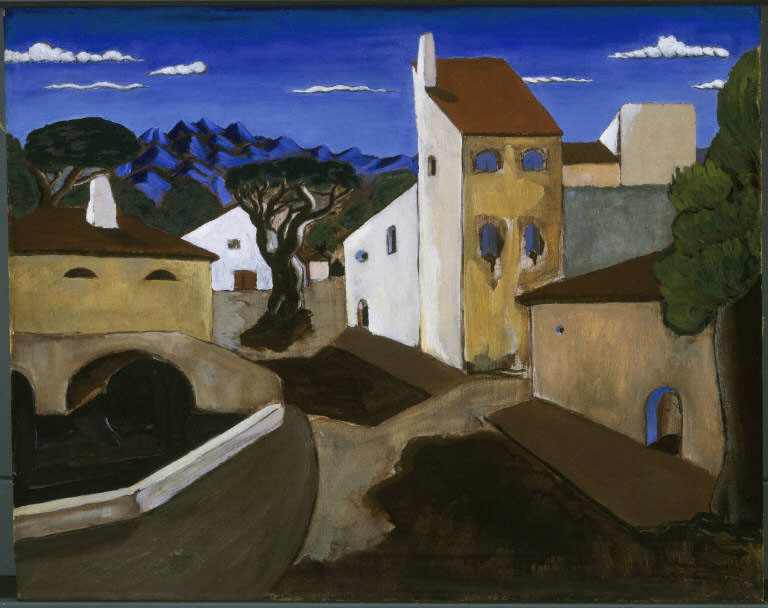
John Graham, Mountain Village, 1927. Oil on canvas, 16 x 20 in. (40.6 x 50.8 cm). The Phillips Collection, Washington, D.C., Acquired by 1929, possibly 1927.

